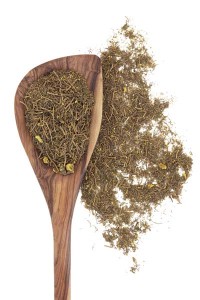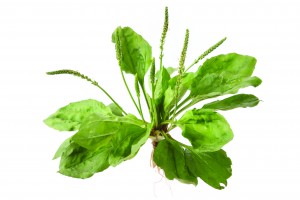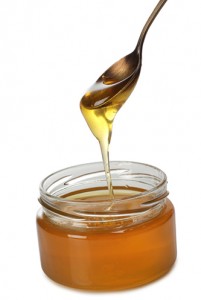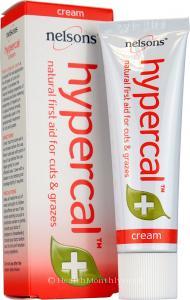DRUGS AND OTHER ITEMS THAT CAN BE GIVEN SAFELY TO DOGS.
If its not on the list DO NOT GIVE IT!
Antibiotic ointments- treatment for small wounds, minor infections and bites. Always clean the area well with soap and water first.
Antibacterial Soap - can be used to clean any wound or injury.
BENADRYL - great for allergic reactions, insect stings, severe itching.
Give twice daily.
Weight Dosage
12 lbs. 12 milligrams (pediatric dose)
25 lbs. 1 tablet (adult dose)
50 lbs. 2 tablets (adult dose)
BUFFERED ASPRIN - use for pain relief or for the anti-inflammatory effects.
Give once or twice daily with food.
Weight Dosage
less than 10 lbs. 1/2 baby aspirin
10-30 lbs. 1 baby aspirin
30-50 lbs. 1/2 regular aspirin
50-100 lbs. 1 regular aspirin
100 + lbs. 2 regular aspirin
Canned Plain Pumpkin - can also be used to combat constipation in dogs - give 1 tablespoon twice a day until the problem is relieved.
Digel - Liquid form can be given to help with gas and as an antacid - give up to 4 tablespoons 3 times a day.
DRAMAMINE - ( this could be also called Gravol) Used to combat motion sickness. Note: This will make your dog very drowsy. Also you can not use this product when shipping a dog via airlines.
Give this product 1/2 hour before travel.
Weight Dosage
small 12.5 milligrams
medium 25 milligrams
large 50 milligrams
EPINEPHRINE - This is given to treat severe allergic reactions that cause anaphylaxes. Use this as a last resort. Try using the Benadryl first. This must be given very carefully as it elevates heart levels and if given in overdose can be very dangerous. I would consult a vet when giving Epinephrine - give 1/4 - 1/2 or less cc injected intramuscularly.
GAS-X - Give to dogs to help relieve excess gas and flatulence. Can also be given to help prevent bloat. Dogs suspected to have bloat should be given 2 doses immediately before transport to emergency clinic.
Weight Dosage
small 1/4 adult dosage
medium 1/2 adult dosage
large 1 adult dosage
Ginger - can also be used to combat motion sickness in dogs and is more gentle and natural.
Glucosamine - used to treat joint pain associated with arthritis. This is for long term treatment.
Weight Dosage
Under 25 lbs. 500 milligrams
25-50 lbs. 1000 milligrams
over 50 lbs. 1500 milligrams
Hydrocortisone - helps to relieve itchy, raw or irritated skin. It is given topically to help reduce itching from hives, hot spots, and insect bites and stings. Apply a small amount up to two times daily.
Hydrogen Peroxide - in dogs this is like Ipecac. Use it to induce vomiting after accidental injection - 10 ccs by mouth every 15 minutes until desired effect is produced.
KAOPECTATE or IMMODIUM - used to stop diarrhea. This is used instead of Pepto due to it containing aspirin which can cause stomach problems - give 1 teaspoon per 10 lbs. of body weight every 4-6 hours for 24 hours until diarrhea stops. Note: can cause the stools to become dark in color. This is normal.
Mineral Oil- can be used to combat constipation in dogs - give up to 4 tablespoons daily until condition is reversed.
Nasal Sprays - Saline and pediatric nasal sprays can be given to alleviate nasal dryness and congestion. No other type should be given unless recommended by your vet.
Tagamet/ Pepcid AD/ ZANTAC
Used to relieve excessive stomach acid or to keep dogs on long term meds from developing ulcers.
Give once or twice daily
Weight Dosage
small 1/4 tablet
medium 1/2 tablet
large 1 tablet
Keep in mind that if you are insecure and unsure (especially for doses ) please by all means call your local vet for verification and to confirm anything. Any vet that really cares will help you on the phone , and if a vet says they never give any advice on some easy to read symptoms , well I'd be calling another vet........
If its not on the list DO NOT GIVE IT!
Antibiotic ointments- treatment for small wounds, minor infections and bites. Always clean the area well with soap and water first.
Antibacterial Soap - can be used to clean any wound or injury.
BENADRYL - great for allergic reactions, insect stings, severe itching.
Give twice daily.
Weight Dosage
12 lbs. 12 milligrams (pediatric dose)
25 lbs. 1 tablet (adult dose)
50 lbs. 2 tablets (adult dose)
BUFFERED ASPRIN - use for pain relief or for the anti-inflammatory effects.
Give once or twice daily with food.
Weight Dosage
less than 10 lbs. 1/2 baby aspirin
10-30 lbs. 1 baby aspirin
30-50 lbs. 1/2 regular aspirin
50-100 lbs. 1 regular aspirin
100 + lbs. 2 regular aspirin
Canned Plain Pumpkin - can also be used to combat constipation in dogs - give 1 tablespoon twice a day until the problem is relieved.
Digel - Liquid form can be given to help with gas and as an antacid - give up to 4 tablespoons 3 times a day.
DRAMAMINE - ( this could be also called Gravol) Used to combat motion sickness. Note: This will make your dog very drowsy. Also you can not use this product when shipping a dog via airlines.
Give this product 1/2 hour before travel.
Weight Dosage
small 12.5 milligrams
medium 25 milligrams
large 50 milligrams
EPINEPHRINE - This is given to treat severe allergic reactions that cause anaphylaxes. Use this as a last resort. Try using the Benadryl first. This must be given very carefully as it elevates heart levels and if given in overdose can be very dangerous. I would consult a vet when giving Epinephrine - give 1/4 - 1/2 or less cc injected intramuscularly.
GAS-X - Give to dogs to help relieve excess gas and flatulence. Can also be given to help prevent bloat. Dogs suspected to have bloat should be given 2 doses immediately before transport to emergency clinic.
Weight Dosage
small 1/4 adult dosage
medium 1/2 adult dosage
large 1 adult dosage
Ginger - can also be used to combat motion sickness in dogs and is more gentle and natural.
Glucosamine - used to treat joint pain associated with arthritis. This is for long term treatment.
Weight Dosage
Under 25 lbs. 500 milligrams
25-50 lbs. 1000 milligrams
over 50 lbs. 1500 milligrams
Hydrocortisone - helps to relieve itchy, raw or irritated skin. It is given topically to help reduce itching from hives, hot spots, and insect bites and stings. Apply a small amount up to two times daily.
Hydrogen Peroxide - in dogs this is like Ipecac. Use it to induce vomiting after accidental injection - 10 ccs by mouth every 15 minutes until desired effect is produced.
KAOPECTATE or IMMODIUM - used to stop diarrhea. This is used instead of Pepto due to it containing aspirin which can cause stomach problems - give 1 teaspoon per 10 lbs. of body weight every 4-6 hours for 24 hours until diarrhea stops. Note: can cause the stools to become dark in color. This is normal.
Mineral Oil- can be used to combat constipation in dogs - give up to 4 tablespoons daily until condition is reversed.
Nasal Sprays - Saline and pediatric nasal sprays can be given to alleviate nasal dryness and congestion. No other type should be given unless recommended by your vet.
Tagamet/ Pepcid AD/ ZANTAC
Used to relieve excessive stomach acid or to keep dogs on long term meds from developing ulcers.
Give once or twice daily
Weight Dosage
small 1/4 tablet
medium 1/2 tablet
large 1 tablet
Keep in mind that if you are insecure and unsure (especially for doses ) please by all means call your local vet for verification and to confirm anything. Any vet that really cares will help you on the phone , and if a vet says they never give any advice on some easy to read symptoms , well I'd be calling another vet........
Old grandma homemade remedies for fleas and tics (safe and natural)
How to fight against dog fleas ?
Forget toxic repellents for your dog! Take care of your pet by choosing healthy foods for him . Here are 4 natural solutions to fight against dog fleas .
garlic
Conceal daily clove of garlic, finely chopped in the food your dog . Licking its fur , the dog will leave a smell of garlic that repel fleas. There are also garlic granules for dogs.
The infusion of eucalyptus
After a mild shampoo for your dog, make it a rinse with a decoction of eucalyptus :
1.Portez 1.25 to boil the water .
2.Jetez - and 4 tablespoons of dried eucalyptus leaves .
3.Faites boil for about 5 minutes.
4.Laissez cool , then use your water flea rinse !
Mint leaves
If you are lucky enough to have mint in your garden , it will be very useful! In fact , the smell of mint repels fleas .
1st method: Boil a handful of mint in one liter of water. Once cooled , apply to your dog's coat .
Method 2 : Rub your hands vigorously with mint leaves. Then pat your dog. It will repeat this trick regularly to be effective .
In addition , remember to put fresh mint leaves in places where your dog moves ( niche basket, etc. . ) .
White vinegar
Dilute 50% white vinegar and 50 % water. Apply on your dog's coat . This solution helps repel and eliminate fleas. Be careful not to put it in the eyes of your dog !
The advice of our grandmothers
In parallel, he will think about disinfecting pillows, niche , carpets ...
Comment lutter contre les puces des chiens ?
Oubliez les répulsifs toxiques pour votre chien ! Prenez soin de votre animal de compagnie en choisissant pour lui des produits sains. Voici 4 solutions naturelles pour lutter contre les puces des chiens.
L’ail
Dissimulez quotidiennement une gousse d’ail finement hachée dans la nourriture de votre chien. En léchant son pelage, le chien laissera une odeur d’ail qui repoussera les puces. Il existe également des granulés à l’ail pour chiens.
L’infusion d’eucalyptus
Après avoir fait un shampoing doux à votre chien, faites-lui un rinçage avec une décoction à l’eucalyptus :
1.Portez à ébullition 1,25 l d’eau.
2.Jetez-y 4 cuillères à soupe de feuilles sèches d’eucalyptus.
3.Faites bouillir pendant environ 5 minutes.
4.Laissez refroidir, puis utilisez votre eau de rinçage anti-puces !
Les feuilles de menthe
Si vous avez la chance d’avoir de la menthe dans votre jardin, elle vous sera très utile ! En effet, l’odeur de menthe repousse les puces.
1e méthode : Faites bouillir une bonne poignée de menthe dans 1 litre d’eau. Une fois refroidi, appliquez sur le pelage de votre chien.
2e méthode : Frottez énergiquement vos mains avec des feuilles de menthe. Puis caressez votre chien. Il faudra renouveler régulièrement cette astuce pour qu’elle soit efficace.
En complément, pensez à mettre des feuilles de menthe fraîche dans les lieux où votre chien s’installe (niche, panier, etc.).
Le vinaigre blanc
Diluez 50 % de vinaigre blanc avec 50 % d’eau. Appliquez sur le pelage de votre chien. Cette solution permet de repousser et d’éliminer les puces. Attention de ne pas en mettre dans les yeux de votre toutou !
Les conseils de nos grands-mères
En parallèle, il faudra penser à désinfecter les coussins, la niche, les tapis …
How to fight against dog fleas ?
Forget toxic repellents for your dog! Take care of your pet by choosing healthy foods for him . Here are 4 natural solutions to fight against dog fleas .
garlic
Conceal daily clove of garlic, finely chopped in the food your dog . Licking its fur , the dog will leave a smell of garlic that repel fleas. There are also garlic granules for dogs.
The infusion of eucalyptus
After a mild shampoo for your dog, make it a rinse with a decoction of eucalyptus :
1.Portez 1.25 to boil the water .
2.Jetez - and 4 tablespoons of dried eucalyptus leaves .
3.Faites boil for about 5 minutes.
4.Laissez cool , then use your water flea rinse !
Mint leaves
If you are lucky enough to have mint in your garden , it will be very useful! In fact , the smell of mint repels fleas .
1st method: Boil a handful of mint in one liter of water. Once cooled , apply to your dog's coat .
Method 2 : Rub your hands vigorously with mint leaves. Then pat your dog. It will repeat this trick regularly to be effective .
In addition , remember to put fresh mint leaves in places where your dog moves ( niche basket, etc. . ) .
White vinegar
Dilute 50% white vinegar and 50 % water. Apply on your dog's coat . This solution helps repel and eliminate fleas. Be careful not to put it in the eyes of your dog !
The advice of our grandmothers
In parallel, he will think about disinfecting pillows, niche , carpets ...
Comment lutter contre les puces des chiens ?
Oubliez les répulsifs toxiques pour votre chien ! Prenez soin de votre animal de compagnie en choisissant pour lui des produits sains. Voici 4 solutions naturelles pour lutter contre les puces des chiens.
L’ail
Dissimulez quotidiennement une gousse d’ail finement hachée dans la nourriture de votre chien. En léchant son pelage, le chien laissera une odeur d’ail qui repoussera les puces. Il existe également des granulés à l’ail pour chiens.
L’infusion d’eucalyptus
Après avoir fait un shampoing doux à votre chien, faites-lui un rinçage avec une décoction à l’eucalyptus :
1.Portez à ébullition 1,25 l d’eau.
2.Jetez-y 4 cuillères à soupe de feuilles sèches d’eucalyptus.
3.Faites bouillir pendant environ 5 minutes.
4.Laissez refroidir, puis utilisez votre eau de rinçage anti-puces !
Les feuilles de menthe
Si vous avez la chance d’avoir de la menthe dans votre jardin, elle vous sera très utile ! En effet, l’odeur de menthe repousse les puces.
1e méthode : Faites bouillir une bonne poignée de menthe dans 1 litre d’eau. Une fois refroidi, appliquez sur le pelage de votre chien.
2e méthode : Frottez énergiquement vos mains avec des feuilles de menthe. Puis caressez votre chien. Il faudra renouveler régulièrement cette astuce pour qu’elle soit efficace.
En complément, pensez à mettre des feuilles de menthe fraîche dans les lieux où votre chien s’installe (niche, panier, etc.).
Le vinaigre blanc
Diluez 50 % de vinaigre blanc avec 50 % d’eau. Appliquez sur le pelage de votre chien. Cette solution permet de repousser et d’éliminer les puces. Attention de ne pas en mettre dans les yeux de votre toutou !
Les conseils de nos grands-mères
En parallèle, il faudra penser à désinfecter les coussins, la niche, les tapis …
Five Natural Topical Antibiotics For Dogs
How often do you walk out of the vet’s office with a bottle of antibiotics in your hand?
One of the most common reasons dogs are given antibiotics is skin issues like abscesses, bacterial and fungal infections. But antibiotics have a number of real drawbacks. Antibiotics kill not only the harmful bacteria, they also indiscriminately kill the good gut bacteria like lactobacillus, which are necessary to crowd out candida (yeast) and other harmful pathogens.
This is why dogs suffer skin issues so often after getting antibiotics.
Unfortunately, antibiotics are routinely given after dog bites, abscesses or surgery without any evidence of infection, “just in case.” And this is a problem because antibiotics will weaken, rather than strengthen, the immune system, setting your dog up for more serious problems later on. This is especially true if one antibiotic is given after another, or if they’re given long term.
Instead of risking the downside of antibiotics for those “just in case” scenarios, why not reach for natural antibiotics instead? There are many effective natural alternatives that will work with – and not against – the body’s own healing abilities.
Here is a list of our five favorite natural, topical antibiotics. Why not try these natural antibiotics first and save the antibiotics for the last resort?
hypercal Hypercal
Hypercal is a mixture of Calendula and Hypericum. Calendula has great antiseptic
and anti-fungal properties, while Hypericum will help with healing and pain. You
can buy this as a prepared cream if using it for small areas without much hair,
or you can make your own spray by mixing the two tinctures in a spray bottle
with sterile water. Dilute the tincture 1:10. Make sure to spray the mixture
underneath the coat so it makes contact with the skin.
Hypercal also works great on open wounds, abrasions, cracked pads and burns
(including sunburn).
Honey in glass Manuka Honey ( found some at Costco )
Manuka honey hails from New Zealand and Australia, from the nectar of the
manuka tree (tea tree). Manuka honey is an excellent topical antibiotic.
Medical researchers are showing an interest in the honey’s antiseptic properties
because of the prevalence of antibiotic resistant super bugs. Researchers have
found some honeys, especially manuka honey, effectively prevent the growth of
MRSA, a nasty super bug that has invaded hospitals.
All honey has the antiseptic hydrogen peroxide, but it is very unstable, easily
destroyed by catalaze, an enzyme found in human skin. But more than 20 years ago,
a New Zealand biochemist discovered what the ancient Maoris had always known.
After you take the hydrogen peroxide out of manuka honey, there remain
additional phytochemical antibacterial factors that are powerful and stable and which years of research have failed to identify as anything other than “non-hydrogen peroxide activity.” This does occur in some other forms of honey, but is most powerful in manuka.
“Not only has it the potential to limit the growth of wound pathogens, but there is evidence that honey has the potential to promote healing,” says Rose Cooper, a microbiologist at the University of Wales Institute in Cardiff. “No other antimicrobial agent possesses these characteristics.”
Manuka honey shines as a topical antiseptic for cuts, wounds and abscesses. Its antibiotic, anti-fungal, and antiviral properties also make manuka honey an effective remedy for kennel cough, ringworm, and many other conditions.
plantain Plantain
Studies have demonstrated that plantain is both antibacterial and anti-inflammatory.
Plantain contains allantoin, an anti-inflammatory phytochemical that kills germs,
speeds wound healing, and stimulates the growth of new skin cells
many commercial cosmetic creams and lotions list allantoin as an active ingredient).
Plantain can be used for insect and snake bites, rashes and cuts. It will not only
help the wound to heal, it will reduce the itching.
You can make a lotion with plantain, calendula and coconut oil for any skin irritation, including mosquito bites, rashes and sores.
You can find this common weed almost anywhere. If your dog is injured while out on a walk, just look down for plantain, chew up the leaves and apply them to your dog’s wound!
Apply plantain tincture directly to your dog’s wound or prepare a tea from the dried leaves.
* Plantain tea or infusion can also be used in the ear for ear infections.
GoldensealSml-200x300Goldenseal
Goldenseal is a natural antibiotic – it contains a chemical compound with
antimicrobial properties called berberine. According to the University of
Maryland Medical Center, berberine strengthens the immune system by
encouraging the proliferation of healthy white blood cells.
You can apply goldenseal tincture topically to disinfect bites, cuts and grazes.
Just dab a bit on a washcloth and apply it directly to the affected areas of
the skin three times a day. You can also prepare your own goldenseal tea for
topical applications.
Cautions - Goldenseal contains the compound berberine which can stimulate contractions, so goldenseal root should not be used in pregnant dogs. Goldenseal should not be used internally for extended periods of time in dogs with heart conditions either.
For infected ears, mix a tablespoon of olive oil with 2 to 3 drops of goldenseal
root extract in a small cup. Tilt your dog’s head to the side and use an eyedropper
to place 2 to 3 drops of the mixture in the ear.
yarrow Yarrow
Yarrow is a common weed that’s famous as a wound healer. You can use it for
cuts and wounds, burns and ulcers as well as swollen, inflamed skin. Yarrow
tincture not only heals wounds, it counters and prevents infection. Yarrow has
been shown to be effective in killing all types of bacteria, including strep and staph.
Simply spray the tincture right on the affected skin or prepare a yarrow tea.
Preparing Herbal Teas and Spritzes
You can save money and make sure your herbs are of really good quality by
preparing your own herbal teas! You can grow your own herbs or purchase them from a reputable, organic source such as Mountain Rose Herbs to use in your tea.
To prepare the tea, place 8 tablespoons fresh herb or 4 tablespoons dried herb in a teapot, then add a quart of boiling water. Allow it to steep for 20 minutes, strain out the herb and allow the water to cool.
Place the tea in a spray bottle and spritz it on your dog’s affected skin three to five times a day. Keep the remaining tea in the fridge, where it will keep for a few days.

copyright protected © 2010 @tinypawscastle.com





Now let's give credit where credit is due to Keisha at :
http://arpeggiopoodles.tripod.com/otcmedicinessafefordogs.html as per her request.
http://arpeggiopoodles.tripod.com/otcmedicinessafefordogs.html as per her request.











Find the complete allergy-proofing guide here.
Allergy-proofing your home with pets
helpful tips for pet owners when it comes to allergy-proofing their homes. Indoor/Outdoor allergies do not only impact humans, but can greatly affect pets as they may suffer from itching, hair loss, and even atopic dermatitis, due to allergy exposure.
New Information
